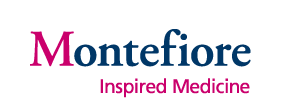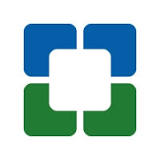A Clinical Study of the Arctic Front Cryoablation Balloon for the Treatment of Paroxysmal Atrial Fibrillation
| Status: | Completed |
|---|---|
| Conditions: | Atrial Fibrillation |
| Therapuetic Areas: | Cardiology / Vascular Diseases |
| Healthy: | No |
| Age Range: | 18 - 75 |
| Updated: | 10/18/2018 |
| Start Date: | October 2006 |
| End Date: | July 2011 |
A Randomized, Controlled Clinical Trial of Catheter Cryoablation in the Treatment of Paroxysmal Atrial Fibrillation.
This study (STOP AF) is a prospective, randomized, controlled, multicenter, pivotal clinical
investigation conducted at 26 investigational sites in the United States and Canada. Subjects
with paroxysmal atrial fibrillation (PAF) referred for ablative intervention after efficacy
failure of one or more Study Atrial Fibrillation (AF) Drugs (flecainide, propafenone or
sotalol) were randomized 2:1 to cryoablation intervention (Experimental Subjects, ES) or to a
Study AF Drug (Control Subjects, CS). Subjects were followed for 12 months with scheduled and
symptom-driven assessments to detect recurrent atrial fibrillation by means of periodic
electrocardiograms, weekly scheduled trans-telephonic monitoring, patient-initiated
trans-telephonic monitoring, and 24-hour Holter monitoring at 6 and 12 months. The first 90
days after study therapy was initiated was considered a blanked period for all subjects.
investigation conducted at 26 investigational sites in the United States and Canada. Subjects
with paroxysmal atrial fibrillation (PAF) referred for ablative intervention after efficacy
failure of one or more Study Atrial Fibrillation (AF) Drugs (flecainide, propafenone or
sotalol) were randomized 2:1 to cryoablation intervention (Experimental Subjects, ES) or to a
Study AF Drug (Control Subjects, CS). Subjects were followed for 12 months with scheduled and
symptom-driven assessments to detect recurrent atrial fibrillation by means of periodic
electrocardiograms, weekly scheduled trans-telephonic monitoring, patient-initiated
trans-telephonic monitoring, and 24-hour Holter monitoring at 6 and 12 months. The first 90
days after study therapy was initiated was considered a blanked period for all subjects.
STOP AF (PS-023) is a randomized, controlled study of subjects 18 to 75 years old who had
been referred for ablative intervention after failing one or two (but not all three)
anti-arrhythmic drugs used in the treatment of AF (flecainide, propafenone and sotalol).
Study subjects were randomized into two arms: the cryoablation (treatment) arm and the
membrane-active antiarrhythmic drug (control) arm. A 90- day blanked follow-up period,
including reablation and medication adjustments was applied in both arms to optimize
therapies. All subjects underwent follow-up assessments at 1, 3, 6, 9 and 12 months, weekly
transtelephonic monitoring, 24-hour Holter monitoring and CT/MRI of the pulmonary veins(at 6
and 12 months) during the trial period. Control subjects who were confirmed to be chronic
treatment failures were permitted to crossover to cryoablation in this trial.
Acute procedural success was defined for subjects that underwent cryoablation and
demonstrated electrical isolation in ≥ 3 Pulmonary Veins (PVs) at the conclusion of the first
protocol-defined cryoablation procedure using the Arctic Front® Cardiac CryoAblation Catheter
System.
The primary effectiveness endpoint was defined as having acute procedural success and freedom
from chronic treatment failure (CTF) for experimental subjects, and freedom from CTF for
control subjects. Freedom from (CTF) was defined for both groups as the occurrence of
detectable AF during a non-blanked follow-up period, or an AF Intervention, or the use of a
non-study AF drug at any time.
The co-primary safety outcome measures were Cryoablation Procedure Events (CPEs) in
cryoablated subjects and Major Atrial Fibrillation Events (MAFEs) in both groups. CPEs were
device- or procedure-related serious adverse events.
Other safety assessments were made during the course of the STOP AF trial specific to
pulmonary vein stenosis (PVS) and phrenic nerve injury.
been referred for ablative intervention after failing one or two (but not all three)
anti-arrhythmic drugs used in the treatment of AF (flecainide, propafenone and sotalol).
Study subjects were randomized into two arms: the cryoablation (treatment) arm and the
membrane-active antiarrhythmic drug (control) arm. A 90- day blanked follow-up period,
including reablation and medication adjustments was applied in both arms to optimize
therapies. All subjects underwent follow-up assessments at 1, 3, 6, 9 and 12 months, weekly
transtelephonic monitoring, 24-hour Holter monitoring and CT/MRI of the pulmonary veins(at 6
and 12 months) during the trial period. Control subjects who were confirmed to be chronic
treatment failures were permitted to crossover to cryoablation in this trial.
Acute procedural success was defined for subjects that underwent cryoablation and
demonstrated electrical isolation in ≥ 3 Pulmonary Veins (PVs) at the conclusion of the first
protocol-defined cryoablation procedure using the Arctic Front® Cardiac CryoAblation Catheter
System.
The primary effectiveness endpoint was defined as having acute procedural success and freedom
from chronic treatment failure (CTF) for experimental subjects, and freedom from CTF for
control subjects. Freedom from (CTF) was defined for both groups as the occurrence of
detectable AF during a non-blanked follow-up period, or an AF Intervention, or the use of a
non-study AF drug at any time.
The co-primary safety outcome measures were Cryoablation Procedure Events (CPEs) in
cryoablated subjects and Major Atrial Fibrillation Events (MAFEs) in both groups. CPEs were
device- or procedure-related serious adverse events.
Other safety assessments were made during the course of the STOP AF trial specific to
pulmonary vein stenosis (PVS) and phrenic nerve injury.
Inclusion Criteria:
- Documented Paroxysmal Atrial Fibrillation (PAF): PAF diagnosis, 2 episodes of PAF
within the last 2 months, at least 1 episode of PAF must be documented
- Age 18-75
- Documented Effectiveness Failure of one (1) AF drug
- Willing to be randomized to either group and do full 12 month follow-up
- Able to follow standardized AF drug protocol
Exclusion Criteria:
- Any cardioversion within 3 months or more than 2 within 2 years
- Amiodarone within 6 months
- LA size > 5.0cm
- Previous LA ablation/surgery, structural heart disease, heart failure class III or IV
- Hypertrophic cardiomyopathy, Mitral prosthesis
- Unstable angina, uncontrolled hyperthyroidism
- Stroke or TIA within 6 months, MI within 2 months, cardiac surgery within 3 months
- Thrombocytosis, thrombocytopenia
- Any condition contraindicating chronic anticoagulation
- EF <40%
- Pregnancy
- Life expectancy <1year
We found this trial at
24
sites
Click here to add this to my saved trials
Click here to add this to my saved trials
Montefiore Medical Center As the academic medical center and University Hospital for Albert Einstein College...
Click here to add this to my saved trials
Click here to add this to my saved trials
Click here to add this to my saved trials
Piedmont Hospital For more than a century, Piedmont Healthcare has been a recognized leader in...
Click here to add this to my saved trials
Click here to add this to my saved trials
Cleveland Clinic Foundation The Cleveland Clinic (formally known as The Cleveland Clinic Foundation) is a...
Click here to add this to my saved trials
Click here to add this to my saved trials
Click here to add this to my saved trials
Click here to add this to my saved trials
Click here to add this to my saved trials
Click here to add this to my saved trials
Click here to add this to my saved trials
Click here to add this to my saved trials
Click here to add this to my saved trials
Click here to add this to my saved trials
Click here to add this to my saved trials
Click here to add this to my saved trials
Click here to add this to my saved trials
Click here to add this to my saved trials
Click here to add this to my saved trials
Click here to add this to my saved trials
Click here to add this to my saved trials



